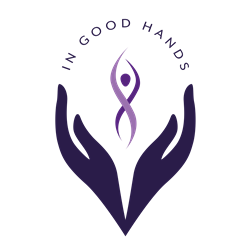WHAT IS BREATH WORK RELAXATION THERAPY
Breath work or diaphragmatic breathing, also known as belly breathing or deep breathing. It is a breathing technique that involves engaging the diaphragm. When you inhale during diaphragmatic breathing, the diaphragm contracts and moves downward, causing the abdomen to expand as the lungs fill with air. This allows for more efficient and effective breathing, as it maximises the amount of oxygen taken in and promotes relaxation by activating the body’s relaxation response.
Find out more about diaphragmatic breathing.
THE MIND-BODY CONNECTION FOR BREATHING TECHNIQUES
The mind-body connection with breathing techniques is a fundamental aspect of many contemplative practices, such as meditation, yoga, and mindfulness. Breathing techniques can be powerful tools for regulating the body’s stress response, calming the mind, and promoting overall well-being.
HOW THE MIND-BODY CONNECTION WORKS WITH BREATHING TECHNIQUES:
- Awareness: Breathing techniques often start with bringing awareness to the breath. This involves paying attention to the sensations of the breath as it enters and leaves the body. By focusing on the breath, you bring your attention to the present moment, which can help quiet the mind and reduce mental chatter.
- Regulation of the Autonomic Nervous System: The autonomic nervous system controls involuntary bodily functions, including heart rate, digestion, and respiratory rate. Breathing techniques such as deep breathing, diaphragmatic breathing, and alternate nostril breathing can help regulate the autonomic nervous system. Deep, slow breathing activates the parasympathetic nervous system, which promotes relaxation and reduces stress.
- Emotional Regulation: Breathing techniques can also help regulate emotions. When we’re stressed or anxious, our breathing tends to become shallow and rapid. By consciously slowing down and deepening the breath, we can signal to the body that it’s safe to relax. This can help alleviate feelings of anxiety and promote a sense of calm.
- Mindfulness and Concentration: Many breathing techniques are practiced in conjunction with mindfulness or concentration exercises. By focusing on the breath, practitioners learn to cultivate greater concentration and awareness. This heightened state of awareness can lead to insights into the nature of the mind and emotions, fostering greater self-understanding and emotional resilience.
- Stress Reduction: Chronic stress can have detrimental effects on both physical and mental health. Breathing techniques offer a simple yet powerful way to counteract the effects of stress. By activating the body’s relaxation response, breathing techniques can reduce muscle tension, lower blood pressure, and improve sleep quality.
Overall, the mind-body connection with breathing techniques underscores the interplay between our physical sensations, emotions, and mental states. By harnessing the power of the breath, we can cultivate greater self-awareness, resilience, and well-being.
THE POWER OF DIAPHRAGMATIC BREATHING
Learning how to relax using various deep/diaphragmatic breathing exercises is an essential part of managing stress. There are many ways to induce real relaxation and to become more mindful. Good breathing techniques trigger the relaxation response, which counteracts the body’s stress response.
Other benefits of deep breathing include:
The main benefits as mentioned is stress reduction and anxiety relief: Deep breathing can help alleviate symptoms of anxiety by slowing down the heart rate, calming the mind, and promoting a sense of tranquility.
~ Improved Respiratory Function, Digestion and boosted Immune Function.
~ Lowered Blood Pressure: Deep breathing can help reduce blood pressure by promoting relaxation and reducing the body’s response to stress.
~ Enhanced Focus and Concentration: Deep breathing exercises can increase mindfulness and improve focus by redirecting attention to the present moment and away from distracting thoughts.
~ Better Sleep: Deep breathing before bedtime can promote relaxation and help prepare the body for sleep, leading to improved sleep quality and duration.
~ Pain Management: Deep breathing techniques can help alleviate discomfort by promoting relaxation and reducing tension in the body, making it useful for managing chronic pain conditions.
Incorporating deep breathing exercises into daily routine can have profound effects on both physical and mental health, promoting relaxation, stress relief, and overall well-being.
To practice diaphragmatic breathing:
- Find a comfortable, relaxed position. You can sit or lie down, whichever is most comfortable for you.
- Place one hand on your chest and the other on your abdomen, just below your ribcage.
- Inhale slowly and deeply through your nose, allowing your abdomen to expand as your lungs fill with air. You should feel your abdomen rise as you breathe in.
- Exhale slowly and completely through your mouth or nose, allowing your abdomen to fall as your lungs empty of air.
- Continue breathing deeply and rhythmically, focusing on the movement of your abdomen with each breath.
Breath work sessions can be arranged at your place of work or individual sessions.

Learn deep breathing exercises to help with stress and anxiety.

